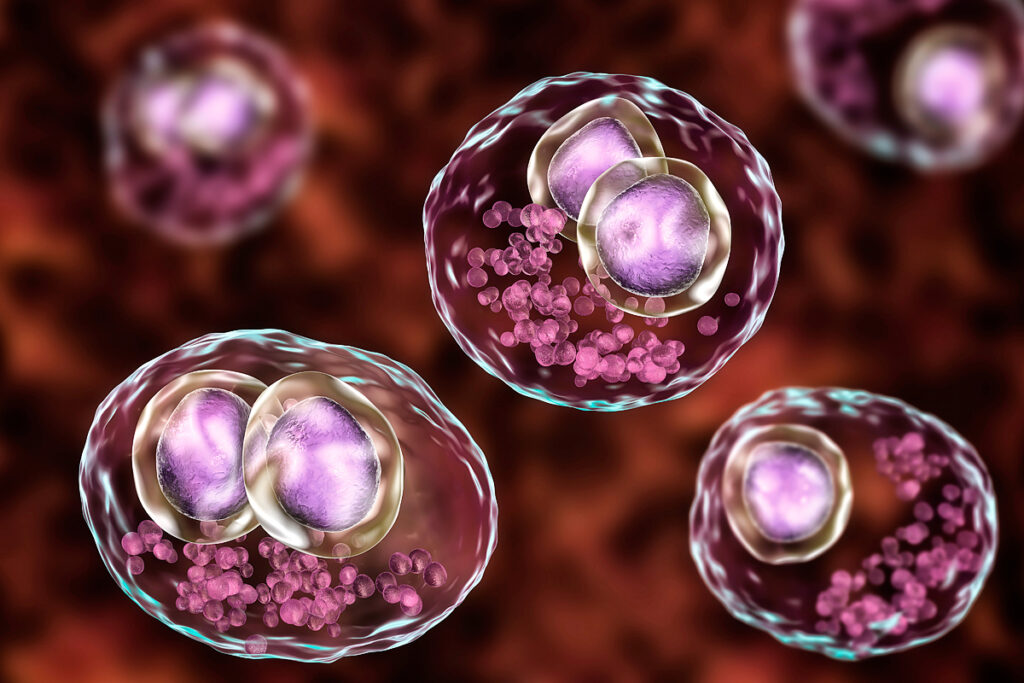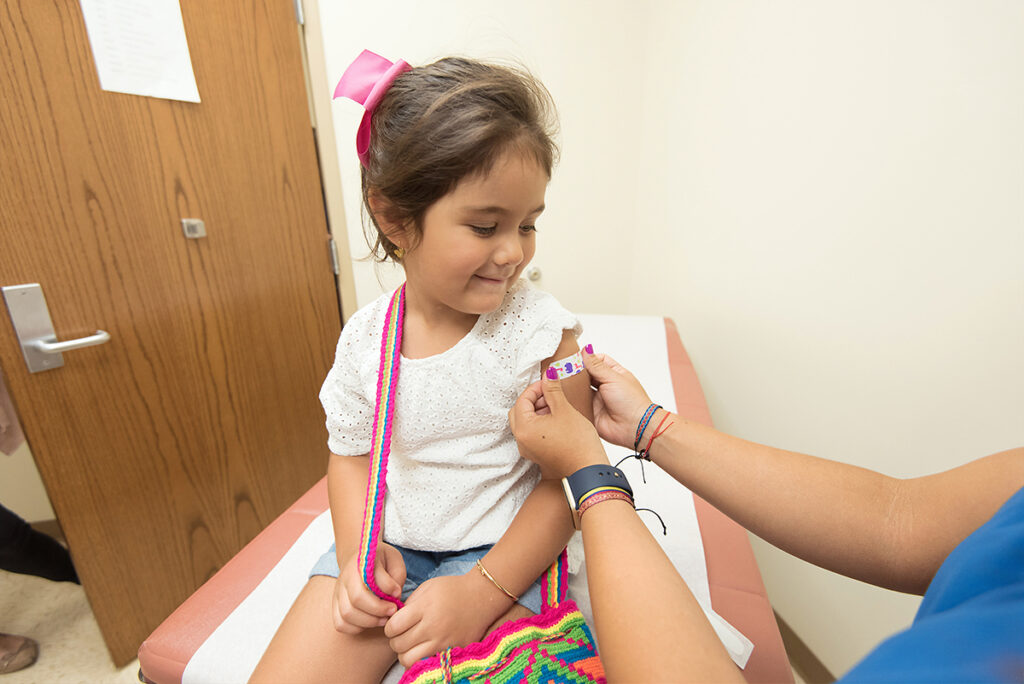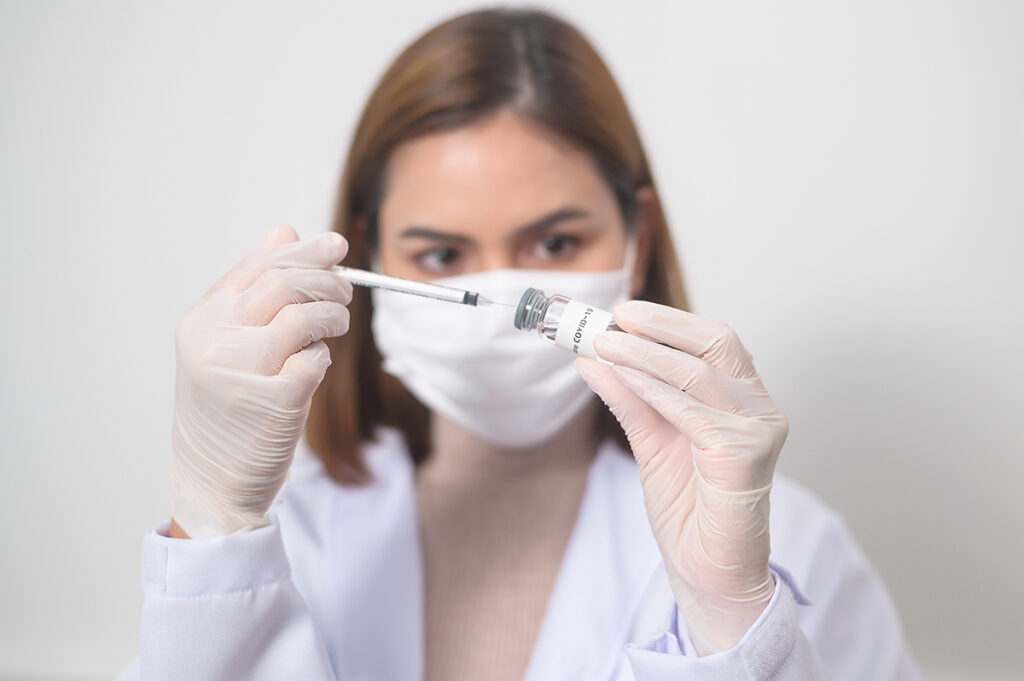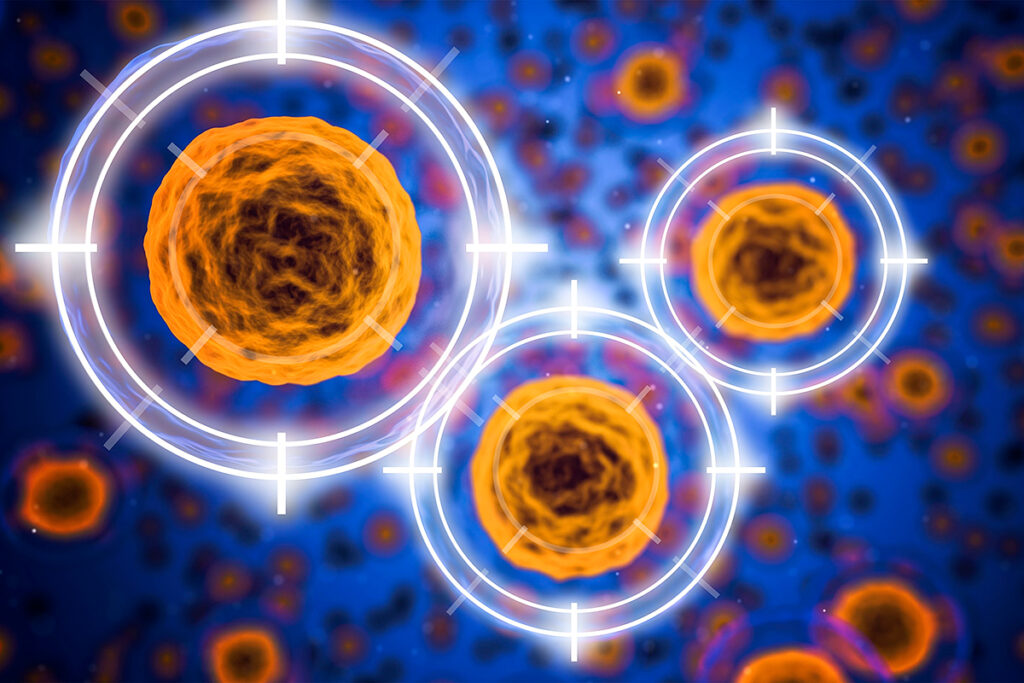Shingles
Shingles (herpes zoster) occur due to the reactivation of the Varicella zoster virus. The chickenpox virus is one of the herpesvirus family. After a person has had chickenpox, the Varicella zoster virus remains in the body in an inactive form, hiding from the immune system in neurons. When reactivated, the virus travels through the neuron process to the skin, becoming contagious and causing blisters. Varicella zoster’s reactivation leads to decreased immunity due to old age, chronic and malignant diseases, metabolic disorders, and HIV infection.
Blisters with shingles usually heal within two to four weeks. However, some people develop persistent nerve pain that can last for months or years. This condition is called postherpetic neuralgia (PGN).
The reason for PGN is that usually, the chickenpox virus is reactivated in the trigeminal and spinal nerve nodes. Spinal nerve nodes contain sensitive neurons that can transmit pain signals to the brain. Persistent abnormal electrical activity of the spinal cord in shingles leads to PGN.
Effective early treatment can reduce acute shingles neuralgia. The shorter the duration and severity of acute neuralgia caused by shingles, the lower the risk of developing PHN.
Treatment of postherpetic neuralgia
Radiofrequency ablation (RFA) is used to treat postherpetic neuralgia. The principle of treatment is that a high-frequency current is applied to the nerve tissue through a needle-electrode. In this case, the nerve tissue is heated to 42° C without causing damage to the nerves, and the transmission of the pain signal is blocked. RFA does not cause such complications as soreness or numbness of the skin, damaging the motor nerves. It is minimally invasive and easily repeatable.
Although radiofrequency ablation is effective and safe in postherpetic neuralgia, it does not reduce the frequency of PHN. The reason for the unstable effectiveness of RFA is that no treatment has yet been developed to help the immune system suppress the Varicella zoster virus.
Interferons for the treatment of shingles
Chinese scientists from the Department of Anesthesiology and Pain Management at Jiaxing University Hospital investigated the clinical efficacy of radiofrequency ablation combined with paravertebral injection of recombinant human interferon-α2b for the treatment of patients with acute shingles neuralgia and the prevention of PHN.
Interferons are signaling molecules synthesized and secreted by the immune, glial, and neuronal cells and have antiviral, antitumor, and immunomodulatory effects. The clinical use of intramuscular or subcutaneous interferon injections for shingles has some therapeutic effect, but systemic treatment often causes adverse reactions such as fever, allergies, and cytopenia.
A 2015 Chinese study has already shown the effectiveness of low-dose recombinant human interferon-α2b to treat shingles. In this study, interferon-α2b was added to the drug blockade of spinal nerves. Interferon increased the analgesic effect and reduced the frequency of PHN. The systemic impact of the treatment was small, and there were practically no systemic adverse reactions.
Injection of recombinant human interferon-α2b has a wide range of antiviral and antitumor properties. Recombinant human interferon-α2b binds to cell surface receptors, induces cells to produce various antiviral proteins, inhibits the spread of the virus in cells, enhances immune function, enhances macrophage phagocytosis, and cytotoxicity of T-lymphocytes and natural killer cells.
Therefore, injection of recombinant human interferon-α2b into the spinal nerve nodes effectively treats acute shingles, as it increases antiviral immunity and avoids adverse reactions caused by systemic administration of interferon.
However, a single treatment of shingles neuralgia with a paravertebral block followed by injection of recombinant human interferon-α2b is insufficient. In those mentioned above 2015 Chinese study, the frequency of PHN was still at least 10%.
Radiofrequency ablation + recombinant interferon injection-α2b are protection against postherpetic neuralgia
Radiofrequency ablation and paravertebral injection of recombinant human interferon-α2b effectively control acute shingles neuralgia through various action mechanisms and reduce PHN frequency.
The present study at Jiaxing University Hospital involved 62 patients with acute shingles neuralgia. The patients were divided into two groups: half of the patients underwent RFA combined with paravertebral injection of recombinant interferon-α2b, the other half (control group) – only RFA.
Before treatment, all patients received oral analgesics. The pain level was assessed on the Numerical Pain Assessment Scale (NRS) and was moderate to severe before treatment.
All patients received traditional antiviral therapy after the appearance of shingles: acyclovir cream externally 3-4 times a day in combination with valacyclovir capsules 0.3 g orally 3 times a day, 7-10 days of treatment.
There were no significant differences in age, gender, place of treatment, past medical history, and types of painkillers between the interferon and control groups. NRS before treatment was 6.32 ± 0.945 and 5.81 ± 1.108, respectively – there was also no significant difference in the level of pain.
Treatment procedure
Before RFA in combination with paravertebral interferon injection, all patients received an oral analgesic.
Temperature, time, pulse length, and frequency at RF: 42° C, 360 s, 20 ms, 2 Hz. After the end of the RFA, the electrode was switched off, and the patient was injected with a therapeutic solution. Solution composition: 2% lidocaine hydrochloride 100 mg, injectable mecobalamin 1 mg, dexamethasone compound 1 mg, injectable recombinant human interferon-α2b 1 million units, and 30% iohexol 3 ml, diluted to 15 ml by adding 0.9% saline solution.
Patients in the control group underwent only RFA and paravertebral nerve block without recombinant human interferon-α2b.
This method of treatment was carried out 1 time a week 3 times. RFA was not performed for the second and the third time – the patients received only a paravertebral nerve block; the therapeutic solution was the same as before.
Treatment results
The analgesic effect of RFA combined with paravertebral injection of recombinant human interferon-α2b on patients with acute shingles neuralgia was evaluated on the NRS scale and the amount of anticonvulsant and analgesic agents. Participants converted doses of anticonvulsants and analgesics into equivalent doses of galantine capsules and equal doses of morphine for oral administration to facilitate the analysis.
In various studies, clinically significant postherpetic neuralgia was defined as persistent pain in NRS with an intensity of 3 or more. The proportion of clinically substantial PHN at 4, 8, and 12 weeks after treatment was compared according to the same criteria.
The pain level and the frequency of PHN were lower in the interferon-α2b group
Over time, the NRS of both groups declined significantly. Compared to the control group, the NRS scores of patients in the interferon group were significantly lower at 1, 2, 4, 8, and 12 weeks after treatment.

The frequency of PHN at 4, 8, and 12 weeks after treatment was significantly lower in the interferon group than in the control group.

Gal-3 and IL-6 levels in the blood, gabapentin, and morphine doses were lower in the interferon-α2b group
Compared to pre-treatment doses, the doses of oral gabapentin capsules and morphine hydrochloride decreased in the interferon group at 1, 2, 4, 8, 12 weeks after treatment, and the difference was statistically significant.
Compared with the control group, the doses of oral gabapentin capsules decreased in the interferon group at 1, 2, 8, 12 weeks after treatment, and the difference was statistically significant. Oral morphine doses decreased in the interferon group at 1, 2, 4, and 12 weeks after treatment, and the difference was statistically significant.

Compared to previous treatment, the levels of Gal-3 and IL-6 in the blood decreased 1, 2, and 4 weeks after treatment, and the difference was statistically significant.
Compared to the control group, the blood levels of Gal-3 and IL-6 in the interferon group decreased 1 week after treatment, and the difference was statistically significant.

Galectin-3 (Gal-3) levels are a promising biomarker for patients with inflammatory pain. Galectin-3 is a pro-inflammatory mediator that is associated with acute and chronic inflammation.
Studies show that mRNA and the Gal-3 protein increase significantly in mice’s spinal cord after infection with the chickenpox virus. In mice with Gal-3 gene deficiency or Gal-3 antibodies in the cerebrospinal fluid, pain sensitivity is significantly reduced. These facts suggest that Gal-3 is involved in the formation of postherpetic neuralgia.
Also, Gal-3 can mediate shingles neuralgia via phagocytic cells and microglia, and the level of Gal-3 in the blood is positively correlated with the severity of neuropathic pain in patients.
In the present study, blood levels of Gal-3 were reduced in all patients after treatment. Compared to the control group, the level of Gal-3 in patients’ blood in the interferon group was lower. That is consistent with the results of other studies.
Interleukin 6 (IL-6) is a marker of inflammation. The function of IL-6 is to regulate cell growth and differentiation, regulate the immune response, and the acute phase response. IL-6 plays an essential role in the anti-infective immune response.
Serum IL-6 levels are positively correlated with neurological damage, and high levels of IL-6 are key factors leading to the development of nerve damage and chronic pain and may play an essential role in the formation of neuropathic pain.
In the present study, patients with RFA combined with paravertebral injection of recombinant human interferon-α2b showed a significant decrease in blood levels of Gal-3 and IL-6 1 week after treatment, indicating a reduction in pain in patients and increased immunity. After therapy after 8 weeks, the levels are generally stable, showing that once the condition improves, it becomes stable, nerve recovery and the condition should improve over a long time, and it takes a long time for follow-up.
No adverse reactions were observed in the two groups of patients after treatment
All patients had no adverse reactions after treatment, such as fever, chills, fatigue, and myalgia. There were no significant changes in the levels of white blood cells and platelets in the interferon group before and after 1, 2, and 4 weeks after treatment.
Conclusions
Pain levels decreased significantly over time in both groups. RFA combined with paravertebral injection of recombinant human interferon-α2b showed a significant reduction in pain indicators at all time points after treatment.
After treatment, the doses of oral capsules of gabapentin and morphine hydrochloride were significantly lower in the interferon group than in the control group.
The frequency of PHN at 4, 8, and 12 weeks was also significantly reduced in the interferon group.
In patients with shingles, exposure to RFA on the spinal nerve nodes may reduce the pain signal transmission. Consequently, different neuropathic processes can be blocked before severe nerve damage occurs.
RFA, in combination with a paravertebral injection of recombinant interferon-α2b, is a more effective treatment for acute shingles neuralgia, which can prevent the occurrence of postherpetic neuralgia.
Confirmation
This study was supported by:
- National Natural Science Foundation of China (82001176);
- Natural Science Foundation of Zhejiang Province of China (LY20H090020, LGF20H090021, LQ19H090007);
- Medical and Health Science and Technology Research Program of Zhejiang Province (2021KY352, 2020RC124, 2020RC122, 2019KY687);
- Science and Technology Project of Jiaxing City (2020AY30009);
- Emergency Science and Technology Special Fund of Jiaxing City (2020GZ30001);
- Key Discipline Established by Zhejiang Province and Jiaxing City Jointly –Pain Medicine (2019-ss-ttyx);
- Key Discipline of Anesthesiology of Jiaxing City (2019-zc-06);
- Jiaxing Key Laboratory of Neurology and Pain Medicine.



